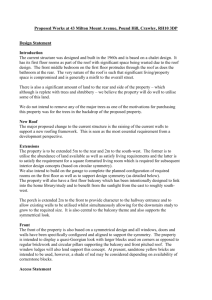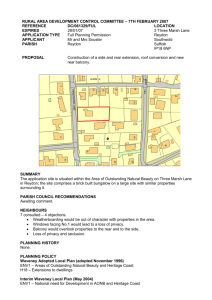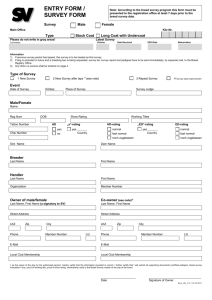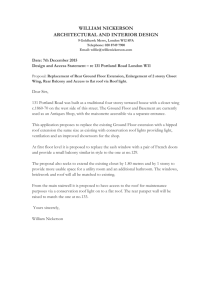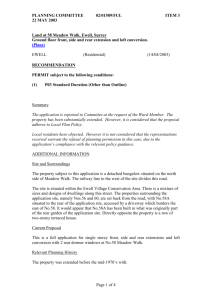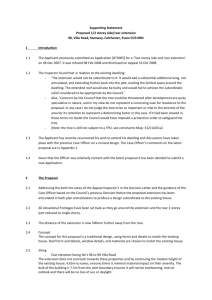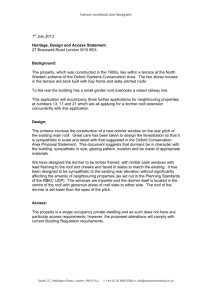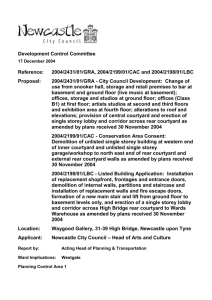Planning and Listed Building Application: Proposed alterations at 3
advertisement
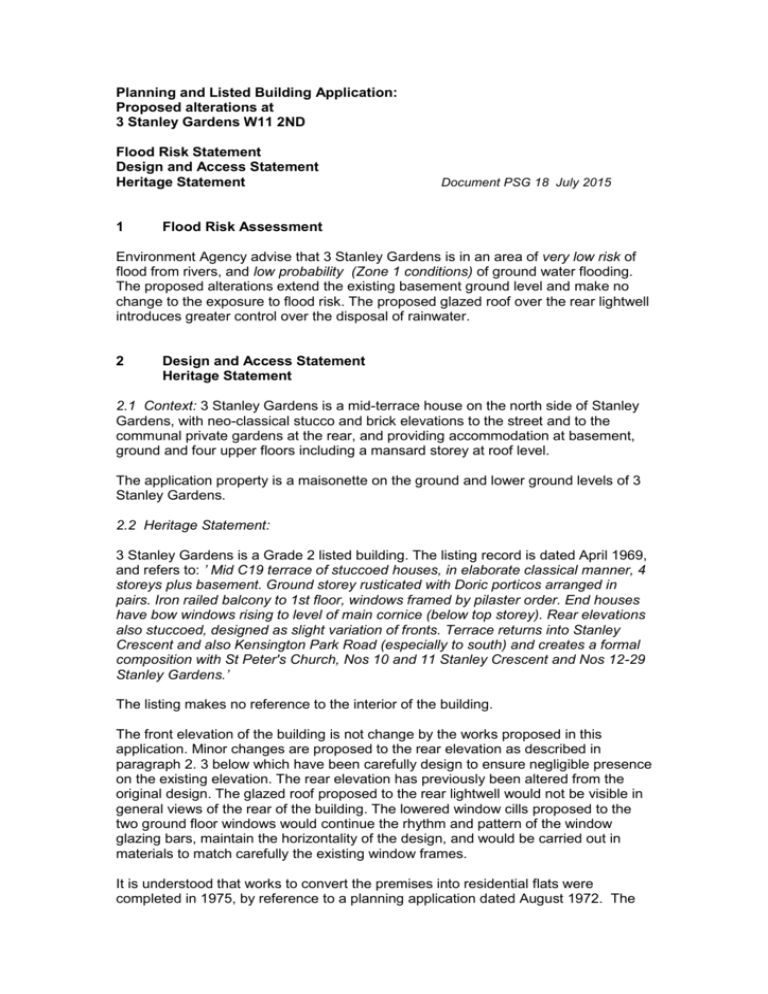
Planning and Listed Building Application: Proposed alterations at 3 Stanley Gardens W11 2ND Flood Risk Statement Design and Access Statement Heritage Statement 1 Document PSG 18 July 2015 Flood Risk Assessment Environment Agency advise that 3 Stanley Gardens is in an area of very low risk of flood from rivers, and low probability (Zone 1 conditions) of ground water flooding. The proposed alterations extend the existing basement ground level and make no change to the exposure to flood risk. The proposed glazed roof over the rear lightwell introduces greater control over the disposal of rainwater. 2 Design and Access Statement Heritage Statement 2.1 Context: 3 Stanley Gardens is a mid-terrace house on the north side of Stanley Gardens, with neo-classical stucco and brick elevations to the street and to the communal private gardens at the rear, and providing accommodation at basement, ground and four upper floors including a mansard storey at roof level. The application property is a maisonette on the ground and lower ground levels of 3 Stanley Gardens. 2.2 Heritage Statement: 3 Stanley Gardens is a Grade 2 listed building. The listing record is dated April 1969, and refers to: ’ Mid C19 terrace of stuccoed houses, in elaborate classical manner, 4 storeys plus basement. Ground storey rusticated with Doric porticos arranged in pairs. Iron railed balcony to 1st floor, windows framed by pilaster order. End houses have bow windows rising to level of main cornice (below top storey). Rear elevations also stuccoed, designed as slight variation of fronts. Terrace returns into Stanley Crescent and also Kensington Park Road (especially to south) and creates a formal composition with St Peter's Church, Nos 10 and 11 Stanley Crescent and Nos 12-29 Stanley Gardens.’ The listing makes no reference to the interior of the building. The front elevation of the building is not change by the works proposed in this application. Minor changes are proposed to the rear elevation as described in paragraph 2. 3 below which have been carefully design to ensure negligible presence on the existing elevation. The rear elevation has previously been altered from the original design. The glazed roof proposed to the rear lightwell would not be visible in general views of the rear of the building. The lowered window cills proposed to the two ground floor windows would continue the rhythm and pattern of the window glazing bars, maintain the horizontality of the design, and would be carried out in materials to match carefully the existing window frames. It is understood that works to convert the premises into residential flats were completed in 1975, by reference to a planning application dated August 1972. The works included the creation of the application property by the conversion of ground and lower ground floors into a maisonette incorporating basement, ground and mezzanine levels. The 1975 conversion removed the existing ground floor structure, inserted a new mezzanine structure, separated the ground floor from the upper floors of the house, and included two new staircases; as a result of the 1975 works none of the original layout, character, enclosure or finish of the original interior remains. 2.3 Proposal: Internal alterations: Basement level: layout alterations to provide an additional shower/bathroom. Introduction of a glazed roof over the rear lightwell and converting and enlarging the existing rear windows to provide access to the enclosed lightwell. Rearrangement of stair-flight. Ground level: layout alterations to make more efficient use of the floor area including enlarging the living room, rearranging the stair flights, introducing a WC/cloakroom. At the rear dining area, where the original floor was lowered in the 1972 conversion, it is proposed to lower the rear window cills to allow views into the rear gardens, which are not available with the current lower floor arrangement. Mezzanine level: rearrangement of stair flight and guardrails. External alterations: Proposed change to front elevation: none. Proposed change to rear elevation: lowering the height of the cills to the two ground floor windows to the dining area, including replacing the existing window frames with new painted wood vertical sliding sash double glazed window frames designed to match the style, profile and glazing bar alignment of the existing frames. Insertion of a glazed roof over the rear lightwell, installed below the level of the existing rear wall to the lightwell and thus masked from external views of the rear of the property; it is noted that the ground level of the adjacent rear gardens falls away from the rear of the house, thus lowering the viewing line and ensuring the glazed roof is hidden by the existing lightwell wall. External materials Rear window frames: painted wood fabricated, profiled and detailed to match the style and profile of the existing window frames. Access: no change is proposed to the levels of the existing floors.
